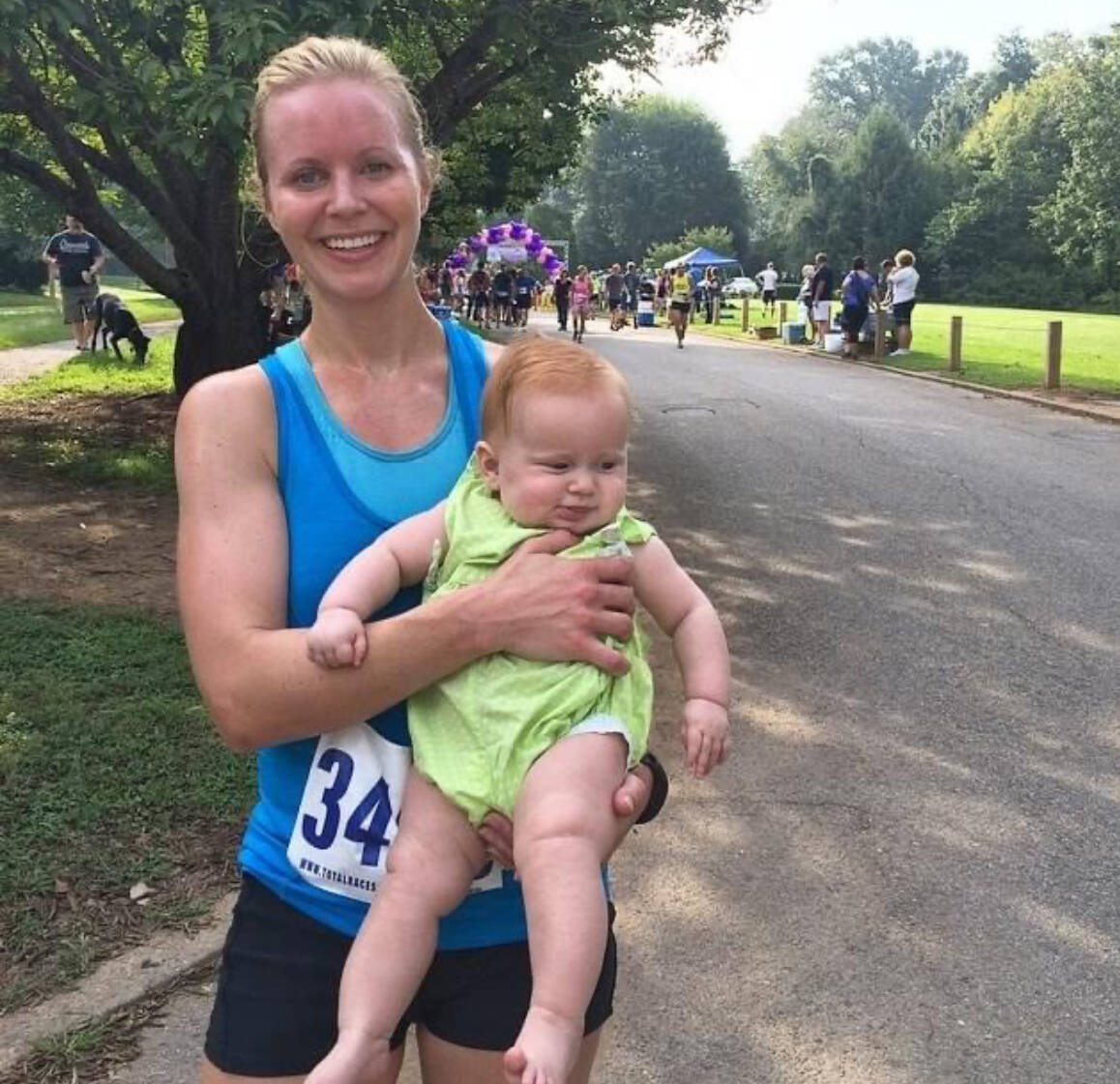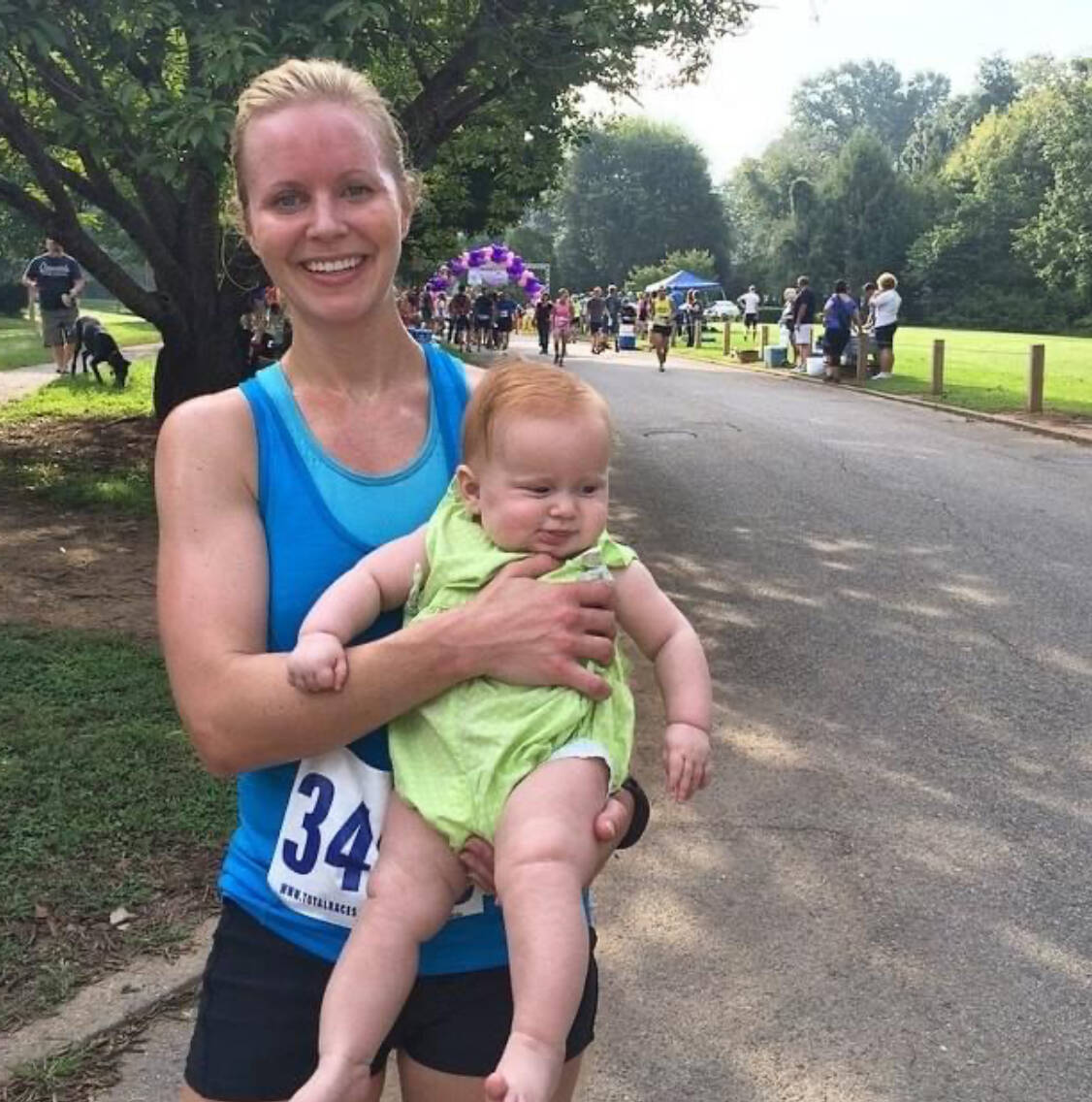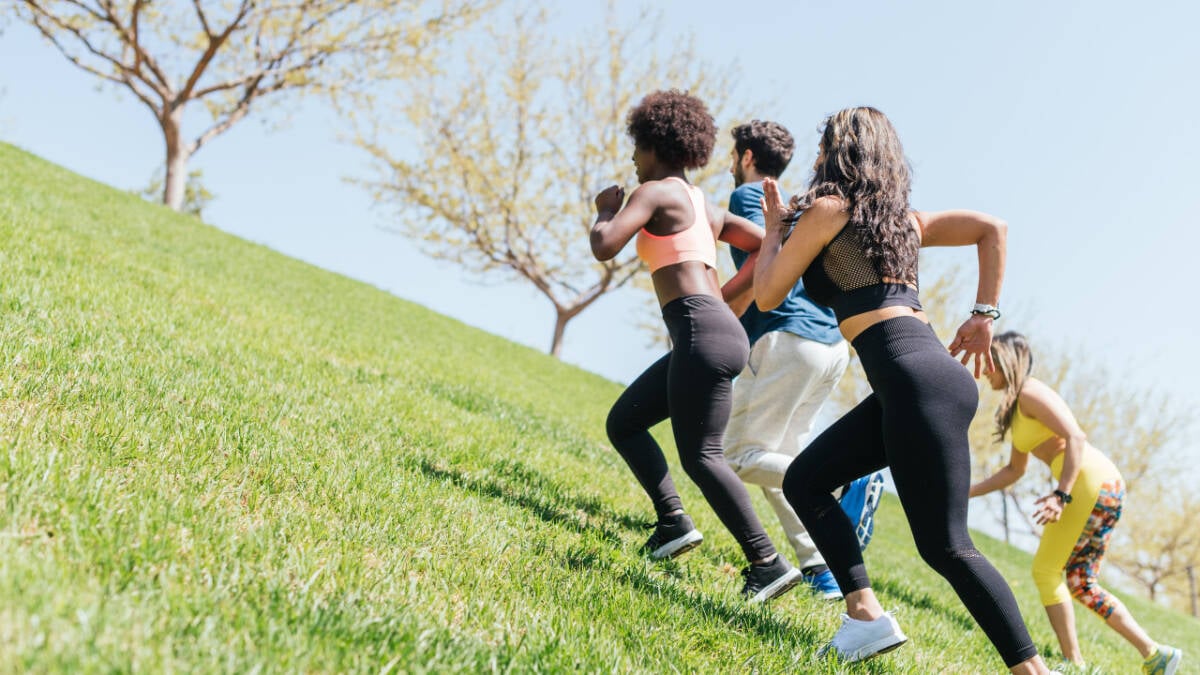How Sports Hypnotism Helped Me Rediscover the Joy of Running
If you’ve followed me at all on Instagram, then you have seen that I am now calling myself a “new runner” – approaching this sport with fresh eyes. This, after many years of battling setbacks and injuries. I have rediscovered the joy in running and the reasons why I loved it in the first place after years of having it being a tool for defining my self-worth—and always coming up short. I have my experience with sports hypnotism to thank.

Before I explain the why, how and what of my experience with hypnotism let me tell you that I am a questioner. I was a journalist after all. It is hard for me to believe in things, and I want to see all the evidence.
Table of contents
Why I wanted to try hypnotism
How I started on my hypnotism journey was that a dear friend of mine, Christina Honkonen, became certified as a hypnotist and mental coach. She is a mom who lives in my neighborhood—and quite frankly, one of the smartest and kindest people I have met in my life. We try to meet for coffee every couple of months and in our coffee chats, she shared how she was becoming fascinated with hypnotism. Being the doer that she is, she started taking classes and doing workshops and eventually became certified.
(She has since become certified two-fold and spent thousands of hours facilitating sessions with clients and learning from renowned mental coaches, nurse anesthetists ((yes, many are trained hypnotherapists!)), sports hypnotists and pain management consultants. Her practice integrates a variety of techniques, including neural-linguistic programming.)
This was during the time I was coming back from my 5-year injury cycle. Christina, now the founder of Honkonen Hypnosis, shared that she loved most working with athletes, largely due to their focus, determination and vivid imaginations – all of which play a pivotal role in the hypnosis experience. That further piqued my interest. Could she help me shed this self-belief that I was old (over 40) and broken (always on the edge of getting the next injury) and instead believe that I was an unbreakable powerhouse ready to slaughter the marathon? It was worth a try.
Could she help me shed this self-belief that I was old (over 40) and broken (always on the edge of getting the next injury) and instead believe that I was an unbreakable powerhouse ready to slaughter the marathon?
Whitney Heins
So, that’s what we started out doing. But through our work together, the result was so much better and fulfilling. And instead of transforming me into this incredible personal record-blasting master’s runner—I am a joyful runner who truly loves the process instead of just paying lip service to it.
This experience was so powerful for me that I want to share about it with you. (Also, while I did my sessions in Christina’s living room—she performs virtual sessions as well for clients).

How I felt being hypnotized
I know the first question most of you have is how does it feel to be hypnotized? It feels like when you are in a deep meditative state or about to fall asleep where half of your brain is asleep, and the other is still aware of your surroundings. If you do yoga and lay in savasana and are totally relaxed—it feels kind of like that. If you’ve done visualizations through a meditation app or with a sports psychologist, it also can feel kind of like that.
That’s because hypnotism does essentially allow you to tun off that part of your brain that is always asking questions and filling you with doubt to keep you safe.
As Christina explains it:
Hypnosis is a natural calm state that allows us to quiet the busy, conscious mind, making it easier for the subconscious to accept new suggestions. When you enter a deeply relaxed state, your subconscious mind can access the full range of your experiences, emotions, and physical sensations.
This is why, for example, you can use hypnosis to help you remember or find something you’ve lost—your body’s memory, including knowledge available at perhaps a cellular level, works with you to guide you toward solutions. It allows you to refine and listen to your body’s instincts more clearly.
By unlocking this connection between mind and body, hypnosis often empowers us to harness our body’s potential for healing, growth, and success. Through hypnosis, we can have the opportunity to create new neural pathways, helping to change unwanted behaviors and overcome negative thought patterns. In essence, it helps us reimagine how we can experience our world.
Through hypnosis, we can have the opportunity to create new neural pathways, helping to change unwanted behaviors and overcome negative thought patterns. In essence, it helps us reimagine how we can experience our world.
Christina honkonen, sports hypnosis clinician
How I got hypnotized
The process of undergoing hypnotism involved me staring at a swinging watch and then clucking like a chicken. Just kidding.
In general, I would lay down on her couch and she would have me walk through a scene such as going down a staircase and opening a door and then relaxing in a hammock. Our first session involved me moving throughout my kitchen where I cut open a lemon and tasted it, and my mouth started to water. This experience, she says, helps to show us how every thought we have creates a biological or physiological change. We can harness this mind-body connection through hypnosis.
Once my brain was relaxed and primed, Christina would have me visualize relevant scenes of me running and feeling strong, sharing what I felt and thought. After our first session, she made a 20-minute recording that I was set to listen to a total of 21 times (could be on non-consecutive days).
She says that there’s nothing magical about 21 days necessarily, but the timeframe and commitment helps to reinforce the thoughts and beliefs we’re aiming to achieve for ourselves. We met a couple more times for an hour session to further flesh out my goals for my sports hypnotism.
Christina’s program integrates a variety of different techniques in addition to hypnosis to create customized approach for each athlete and client.
My goal for hypnotism changed
During this time, our family got sick, and I was unable to run for a few weeks. This caused me to I fall off the hypnotism wagon since achieving my running goals felt further away.
We met again and through our conversation, it became clear that I was in turmoil over whether truly wanting to chase my big audacious goals (most notably, a 2:45 marathon which I pinpointed in 2019 at the start of my injury cycle).
Based on my specific situation, Christina decided to facilitate a neurolinguistic programming techniques inspired by inspired by “Parts Therapy. (Running so intensely left me so fatigued and feeling guilty for being so tired for my family. I was not a better mom or wife because of it…)
Why did I want to run fast? What was I seeking? Why did I feel like my self-worth hinged on being able to run specific times? Why? Why? Why?
Christina says that hypnosis works when the client wants the end result, so for us, much of our work centered around honing in on what that really was – and is – for me.
Getting to the root of my goals
At the end of it all, the answer appeared: Belongingness. Connection. Community.
I wanted to run fast because I wanted to feel like I belonged. And I only could feel like I belonged if I felt like I was worthy or special. And being worthy or special had to be earned by an accomplishment.
And through my work with Christina, I realized that wasn’t true at all. I didn’t have to earn belongingness. In fact, earning that would be false belonging. I already belonged. I already had a community waiting for me—it was up to me to be a part of it. Certain running times weren’t going to make me be accepted.
With this, I shed the albatross of my running goals which kept putting me in a self-imposed pressure cooker that kept getting me injured. I realized how much these goals were not only holding me back but stealing my joy from running.
I got myself back into a good place with running, hired a running coach who was aligned with me philosophically, and am now in the healthiest spot of running I have been in six years.
Did I cry during my hypnotism?
During my hypnotism, particularly the Parts hypnotism, I definitely cried. In fact, Christina mentioned that crying is common, especially when deep shifts are taking place, which often happens when we release limiting – or even damaging – beliefs. In fact, Christina said every single one of her clients cries.
I don’t know why other people cried, but I can tell you that I cried because it made me feel like a little girl again just wanting to feel loved, special, and comforted. It made me realize how much I move through life just trying to prove to other people that I am worthy. How much time and effort I waste on trying to prove something to someone instead of doing what really makes me feel happy and fulfilled.
This has been a very powerful realization that was unlocked just by spending a couple of hours on my friend’s couch.
In addition to changing my relationship with running—moving from toxic to joyful—it has changed how I move throughout the day. I feel free to be myself with everyone. My husband has noticed that I am a lot “chattier” these days. It’s allowed me the freedom to be less “productive”—always trying to “accomplish something.” And it’s given me the courage to embrace living the life I want.
If you are a runner who struggles with comparison, or not feeling enough, or feels like your brain gets in the way of your body—I cannot recommend hypnotism enough. Honestly, if you are a person who struggles with anything—from bad habits to negative thinking—I recommend trying it.
And for those of you focused on improving technique, overcoming injury or just wanting to take your performance to the next level, hypnosis can play a pivotal role.
As a questioner, I doubted the power of sports hypnotherapy. And while I didn’t immediately walk out of her living room a different person—the shift happened gradually an I am happier for it.
Could hypnotism work for you?
Christina emphasizes that she is not a therapist; rather, her work is more accurately described as that of a facilitator and mental coach. She helps clients unlock new ways of thinking and perceiving their world. And this does indeed take time in most cases, she says.
“Repetition, visualization and practice are all part of the bigger picture. When we move the needle toward an evolution in thinking, we create space where the behavior change can take root.”
“The phrase ‘the truth will set you free’ could easily define the work of a skilled hypnotist,” Christina explains. “But it’s important to remember that this ‘truth’ has always been within us, it just got lost or covered up somewhere along this journey we call life.”
Her role is to guide clients in reconnecting with their authentic selves, creating a space where they can perform, achieve, and serve at their highest potential.
“Whether we’re focusing on improving athletic performance or addressing something as deeply transformative as self-love, the path we take together is always one of honesty and rediscovery.”






